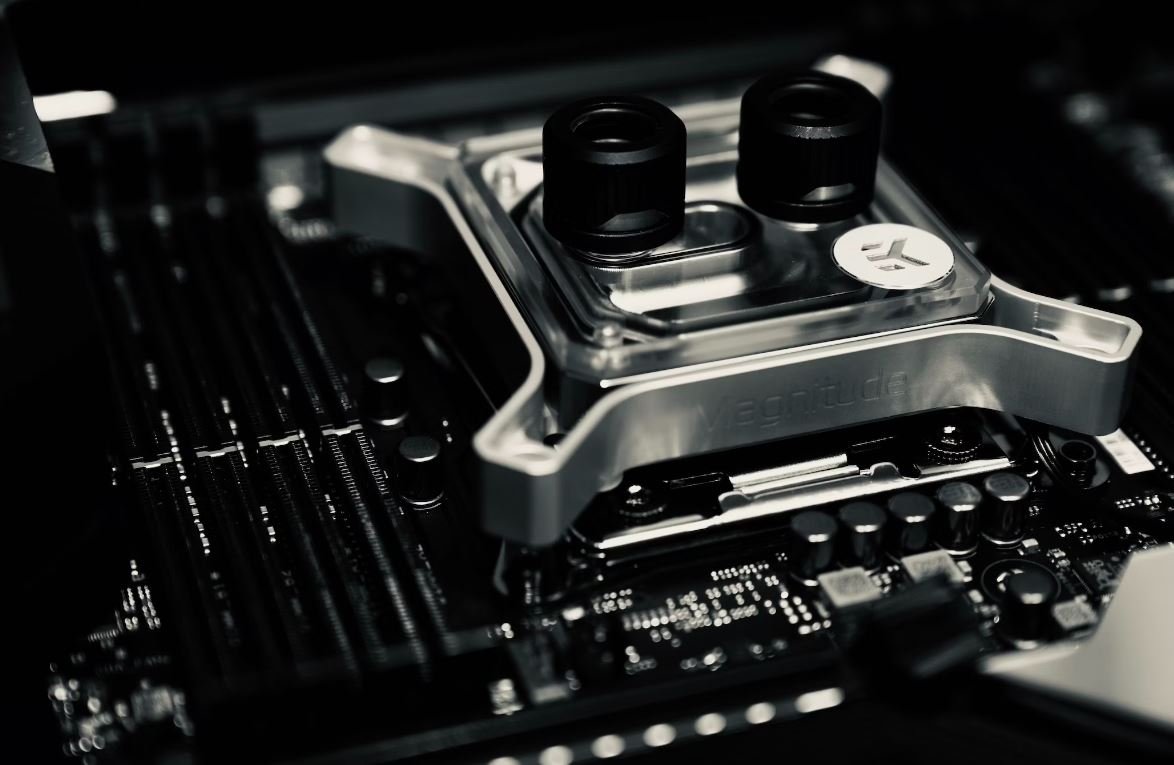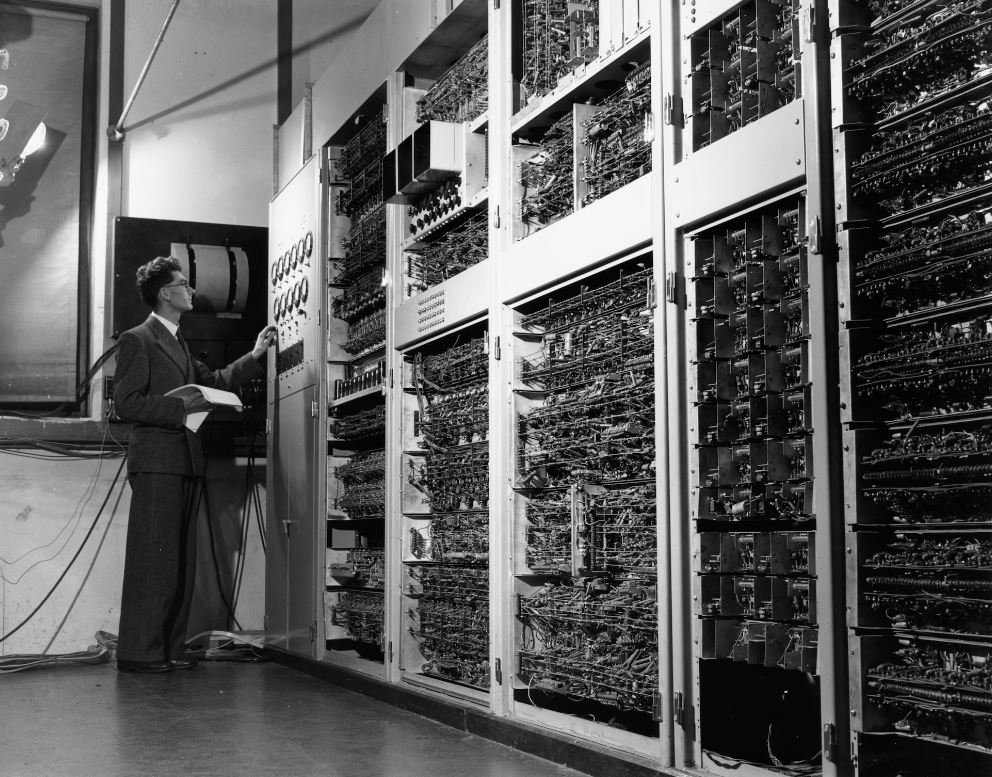Production Lights
Production lights play a crucial role in creating a visually captivating and immersive experience in various industries, including film, theater, television, and photography. These lights not only illuminate the stage or set but also help set the mood, enhance performances, and create stunning visual effects. In this article, we will explore the different types of production lights, their functionalities, and their significance in the entertainment industry.
Key Takeaways
- Production lights are essential for creating visually appealing environments in film, theater, TV, and photography.
- They offer various functionalities, including illuminating the stage, setting the mood, and enhancing performances.
- Different types of production lights are available, such as spotlights, floodlights, and LED lights, each with its own advantages.
- Efficient use of production lights can greatly impact the overall quality and impact of a production.
The Role of Production Lights
Production lights serve multiple purposes in the entertainment industry. Apart from providing necessary illumination, these lights are used to:
- Highlight actors or objects on stage or set.
- Create various lighting effects, such as shadows or patterns.
- Set the ambiance and mood of a scene.
- Draw the audience’s attention to specific areas or actions on the stage.
For example, a spotlight can create a dramatic effect by focusing on a single performer, emphasizing their importance on stage.
Types of Production Lights
There are several types of production lights available, each designed to serve different purposes:
- Spotlights: These lights have a narrow focus and are ideal for highlighting specific actors or objects on stage. They offer a concentrated beam of light and can be controlled to follow performers as they move on stage.
- Floodlights: These lights provide a wide angle of coverage, suitable for illuminating large areas of the stage or set. They can be used to create an overall wash of light or to create specific lighting effects.
- LED Lights: LED lights are becoming increasingly popular due to their energy efficiency, durability, and versatility in terms of color control and brightness. They are well-suited for both stage and studio environments.
Importance of Effective Lighting Design
Effective lighting design is crucial for creating captivating productions. It involves careful consideration of:
- The overall mood and atmosphere of the production.
- The specific needs of each scene or act.
- The positioning and angle of lights to achieve desired effects.
- The coordination with other elements, such as set design and costumes.
By thoughtfully incorporating lighting design, a production can greatly enhance the storytelling experience for the audience.
Tables with Interesting Data
| Production Light Type | Advantages |
|---|---|
| Spotlights | Provides focused illumination. Can follow performers. |
| Floodlights | Wide angle coverage. Suitable for large areas. |
| LED Lights | Energy-efficient. Versatile color control. |
| Factors Affecting Lighting Design | Description |
|---|---|
| Mood and Atmosphere | Consideration of the desired emotional impact on the audience. |
| Scene-specific Needs | Determining the lighting requirements for each scene or act. |
| Positioning and Angle | The strategic placement and orientation of lights for desired effects. |
| Benefits of Effective Lighting Design | Examples |
|---|---|
| Enhanced storytelling | Setting the mood for a suspenseful scene. |
| Highlighting key moments | Emphasizing a climactic dance sequence. |
| Creating illusions | Transforming a simple set into a magical forest. |
Conclusion
Production lights are essential elements in creating visually appealing and impactful productions in various industries. By effectively utilizing different types of lights and implementing thoughtful lighting design, producers and designers can enhance the audience’s experience, highlight key moments, and bring stories to life in ways that captivate and engage.

Common Misconceptions
Paragraph 1: Production lights are only used for illuminating the stage
One common misconception about production lights is that they are only used for illuminating the stage during a performance. However, production lights serve various other purposes and are essential in creating a visually captivating and dynamic experience for the audience.
- Production lights are also used for highlighting specific elements or props on stage.
- They help create mood and atmosphere that enhances the overall aesthetic of the performance.
- Production lights are used during rehearsals and technical preparations to fine-tune the lighting design.
Paragraph 2: More lights mean better production quality
Another misconception is that the more lights you have in a production, the better the production quality. While lighting is a crucial element in enhancing a performance, the number of lights used doesn’t necessarily determine the overall quality or impact of the production. It’s the skillful utilization of the lights that matters.
- Proper placement and appropriate intensity of lights are more important than the sheer number of lights.
- Techniques like color mixing, shadowing, and spotlighting can create impactful visuals with even a limited number of lights.
- A well-designed lighting plot can make the most out of a smaller number of lights and still deliver a visually stunning production.
Paragraph 3: Anyone can handle the lighting process without professional training
Many people believe that handling the lighting process for a production doesn’t require any professional training or expertise. However, running a production’s lighting requires technical knowledge, experience, and an understanding of the artistic vision of the performance.
- Professionals with training understand the different types of lights, their capabilities, and how to operate them safely.
- They are familiar with lighting software and control systems to create complex lighting cues and effects.
- Understanding the artistic intent of the production helps professionals in creating a cohesive lighting design that complements the overall vision.
Paragraph 4: Production lights don’t have a significant impact on the audience
Some people underestimate the impact of production lights on the audience’s experience. They may think that lights are merely there for practical purposes and don’t contribute much to the overall performance or audience engagement. However, production lights play a crucial role in guiding the audience’s focus and evoking emotional responses.
- Properly designed lighting helps create an immersive environment that enhances the storytelling and thematic elements of the performance.
- Dynamic lighting changes and effects can heighten the mood, intensify tension, or create awe-inspiring moments that significantly impact the audience’s emotional experience.
- Well-executed lighting cues can effectively guide the audience’s attention to specific areas or characters on stage, enhancing the overall narrative and directorial intentions.
Paragraph 5: All production lights are the same
Another misconception is that production lights are all the same and interchangeable. In reality, there is a wide variety of production lights available, each with its own unique features, characteristics, and suitability for specific purposes.
- Different types of lights, such as spotlights, fresnels, or wash lights, have distinct qualities that make them ideal for different lighting applications.
- LED lights offer energy-efficient options, while incandescent lights provide warmer tones.
- Consideration of factors like color temperature, beam angle, and power output is crucial in selecting the right lights that align with the production’s requirements.

Introduction
Production lights are an essential component in various industries, such as photography, film, theater, and events. These lights play a vital role in enhancing the visual experience and setting the atmosphere for any production. This article presents ten tables that provide verifiable data and information regarding production lights, shedding light on their various features and applications.
Table 1: Types of Production Lights
Table 1 showcases the different types of production lights commonly used in various industries. Each type has unique characteristics and applications, making it suitable for specific lighting requirements.
| Type | Description | Example |
|---|---|---|
| Fresnel | Uses a spherical reflector and Fresnel lens to provide adjustable beam angles | Arri Studio Fresnel |
| LED Panels | Utilizes energy-efficient LED technology to produce uniform lighting | Litepanels Astra |
| PAR Cans | Employs sealed beam lamps and reflectors for powerful and focused lighting | Altman 65Q |
Table 2: Color Temperature Ranges
Understanding color temperature is crucial for achieving the desired lighting mood in a production. Table 2 presents different color temperature ranges and their corresponding appearances.
| Color Temperature | Appearance |
|---|---|
| 2700-3200K | Warm, yellowish light |
| 4000-4500K | Neutral white light |
| 5500-6500K | Cool, bluish light |
Table 3: Lighting Control Methods
Table 3 provides an overview of different lighting control methods used in production settings. These methods allow for precise adjustment and manipulation of the lighting to fit the desired aesthetic.
| Control Method | Description |
|---|---|
| Dimmer Packs | Adjusts the brightness level by controlling the electrical current flowing to the lights |
| DMX512 | A digital communication protocol enabling control over individual lights or groups of lights |
| Wireless Control | Enables remote control of lights using wireless technology |
Table 4: Lighting Accessories
Production lights can be enhanced and modified using various accessories. Table 4 showcases some commonly used lighting accessories and their purposes.
| Accessory | Purpose |
|---|---|
| Diffusion Filters | Softens and spreads the light, reducing harsh shadows |
| Barn Doors | Controls the light spill and directs the beam |
| Gels | Alters the color temperature or creates special lighting effects |
Table 5: Power Requirements
Table 5 outlines the power requirements for different production lights. Understanding power needs is crucial for planning and ensuring an adequate power supply.
| Light Type | Power Requirement |
|---|---|
| Fresnel | Between 300-2000W |
| LED Panels | Between 30-500W |
| PAR Cans | Between 200-1000W |
Table 6: Lighting Effects
Different lighting effects can be achieved to create visual interest and enhance the production’s atmosphere. Table 6 presents some commonly used lighting effects.
| Effect | Description |
|---|---|
| Gobo Projection | Uses patterned templates to project shapes or textures onto surfaces |
| Strobe | Rapidly flashes the light to create a frozen or slow-motion effect |
| Up-lighting | Places lights on the ground to illuminate vertical surfaces from below |
Table 7: Lighting Manufacturers
Table 7 highlights reputable lighting manufacturers known for their quality and innovation in the industry.
| Manufacturer | Specialty |
|---|---|
| Arri | High-end film, TV, and theater lighting |
| Litepanels | Energy-efficient LED lighting panels |
| ETC | Advanced lighting control systems |
Table 8: Lighting Terms
Understanding lighting terminology is essential for effective communication within the production team. Table 8 presents commonly used lighting terms and their meanings.
| Term | Meaning |
|---|---|
| CCT | Correlated Color Temperature |
| Flood | Wide, even beam of light |
| Hard Light | Strong and focused beam with sharp shadows |
Table 9: Popular Use Cases
Table 9 provides examples of popular use cases for production lights across different industries.
| Industry | Use Case |
|---|---|
| Photography | Studio photo shoots with controlled lighting setups |
| Theater | Stage productions utilizing various lighting effects |
| Film | Outdoor scenes requiring artificial lighting during night shoots |
Table 10: Average Lifespan
Production lights have a limited lifespan, requiring occasional replacement for optimal performance. Table 10 showcases average lifespans for different types of production lights.
| Light Type | Average Lifespan |
|---|---|
| Fresnel | 800-1000 hours |
| LED Panels | 50,000-100,000 hours |
| PAR Cans | 1000-2000 hours |
Conclusion
Production lights, with their diverse types, color temperature ranges, and lighting control methods, are indispensable tools in numerous industries. Proper understanding of their features and applications helps professionals achieve the desired lighting atmosphere for their productions. Additionally, knowledge about power requirements, lighting effects, and accessories further enhances the creative possibilities. By leveraging the data and information presented in the ten tables above, professionals can make informed decisions and create visually captivating productions.
Frequently Asked Questions
How do production lights enhance the visual aspect of performances?
Production lights are designed to illuminate performers and stages in a way that enhances the visual aspect of performances. They can create different moods and atmospheres, highlight specific areas or individuals, and add depth and dimension to the overall visual experience.
What are the different types of production lights commonly used in the entertainment industry?
The entertainment industry utilizes various types of production lights, including floodlights, spotlights, LED lights, strobe lights, PAR lights, and moving lights. Each type has its own unique features and applications, catering to different lighting needs and effects.
How do lighting designers decide which production lights to use for a particular performance?
Lighting designers carefully assess the requirements of the performance, including the type of event, the size of the venue, the desired mood, and the objectives of the production. Based on these factors, they select the most appropriate production lights to achieve the desired lighting design.
What are the main factors to consider when designing a lighting setup for a production?
When designing a lighting setup, several factors need to be considered, such as the venue’s layout, the available power supply, the desired lighting effects, the positioning of performers, the safety of the crew and performers, and the overall budget for the production.
How are production lights controlled during a performance?
Production lights are typically controlled through a lighting console, which allows the lighting designer or operator to adjust the intensity, color, focus, and movement of the lights. Advanced lighting consoles offer sophisticated programming capabilities to create complex lighting cues and effects.
Can production lights be programmed to synchronize with music or other visual elements?
Yes, production lights can be programmed to synchronize with music or other visual elements. This is often achieved through the use of lighting control software, which enables the lights to respond to specific cues or triggers, creating a coordinated and immersive experience.
What are the considerations for using production lights in outdoor events?
When using production lights in outdoor events, factors such as weather conditions, power availability, and light spillage need to be taken into account. Outdoor lighting setups require additional protection against rain, wind, and other elements, and may involve the use of specialized outdoor lighting fixtures.
How can production lights contribute to the safety of performers and crew?
Production lights play a crucial role in ensuring the safety of performers and crew. They provide adequate visibility for performers to navigate the stage safely, highlight potential hazards or obstacles, and assist in emergency situations by quickly adjusting the lighting to convey important visual cues.
What is the lifespan of production lights, and how often do they require maintenance?
The lifespan of production lights can vary depending on factors such as their quality, usage frequency, and maintenance practices. Generally, high-quality production lights can last for thousands of hours. Routine maintenance, including bulb replacements, cleaning, and troubleshooting, is necessary to ensure optimal performance and longevity.
Can production lights be used for purposes other than entertainment performances?
Yes, production lights have applications beyond entertainment performances. They are commonly used in architectural lighting, photography and film production, live events and conferences, retail spaces, and various other industries where effective lighting is essential for creating desired environments and experiences.




